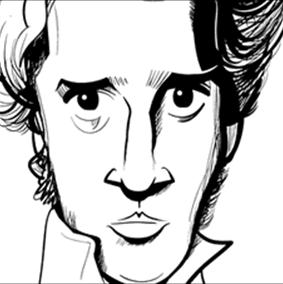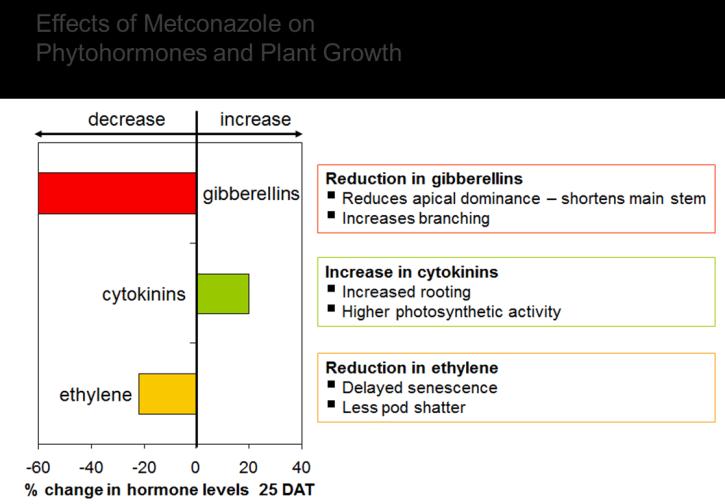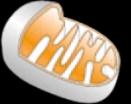Betydningen af svampemidlernes formulering samt fysiologiske effekter
Physiological Effects of Fungicides Course for Advisers
Koldkaergaard / Aarhus, September 6th 2012


Physiological Effects of Fungicides
Physiological Effects of Fungicides:
Guidelines for presentation
Life can only be understood backwards;
but it must be lived forwards
Motto for advise in plant protection: As little as possible but as much as neccessary
Harald Koehle, BASF Aarhus, September 6th 2012
Physiological Effects of Fungicides
Preview on Topics: • What are Physiological Effects?
• Are Physiological Effects linked with Chemical Classes of
Fungicides or rather specific for Individual Compounds?
• Case Study with the Strobilurin Fungicide Pyraclostrobin
• Physiological Effects in Practical Application: Opportunities, Recommendations and Limits
Harald Koehle, BASF Aarhus, September 6th 2012


Physiological Effects of Fungicides
Example: shifts in source - sink
Harald Koehle, BASF Aarhus, September 6th 2012
Physiological Effects of Fungicides
• What are Physiological Effects?
Source Sink
• respiration and
• starch and protein
Assimilates
inhibition of
• metabolism and
infected
growth of fungus
• wound respiration
(decreased leaf surface)
• defense reactions
Harald Koehle, BASF Aarhus, September 6th 2012
Physiological Effects of Fungicides
• What are Physiological Effects?
Conclusion: • Since fungal infection interferes with physiology of plant,
each active fungicide thus has physiological effects.
• However, some fungicides influence physiological processes
of the plant directly also in the absence of fungal pathogens.
in fact the scientific explanation and practical relevance of such effects are the topics of our consideration now.
…the original question Ghita asked: How different fungicide classes* can influence the plant physiology?
*Strobe, Triazole, SDHI, Benzophenone, Amines, Anilinopyrimidines
– solo and in combinations
Harald Koehle, BASF Aarhus, September 6th 2012
Physiological Effects of Fungicides
• Are Physiological Effects linked with Chemical Classes of
Fungicides or rather specific for Individual Compounds?
Conditions for physiological effects triggered by compounds directly
• Compounds mimic or antagonize plant hormones in interaction with specific
rezeptors (example: PGR‘s),
• or compounds interfere with signal molecules / signal chains and energy
• or compounds alter abundance of key metabolites in central biochemical
>> In each case compounds have to get to targets insides the plant symplast
>>> uptake, translocation / partitioning, metabolism (degradation, activation)
are mainly influenced by physicochemical properties of molecules
but do not depend on chemical nomenclature of pharmakophore.
Harald Koehle, BASF Aarhus, September 6th 2012
Physiological Effects of Fungicides
• Are Physiological Effects linked with Chemical Classes of
Fungicides or rather specific for Individual Compounds?
Conclusions: • Physiological effects of fungicides are immanent with properties of
individual compounds.
• The quantitative response results by the abundance of compound
at target(s), the interaction with targets and the role/relevance of target(s) in stage of plant development:
• Although the Biochemical Mode of Action for one chemical class of
actives is assumed to be similar, according to abundance as a parameter,
the quantitative differences in physiological effects can be as
pronounced like between different chemical classes of compounds.
Harald Koehle, BASF Aarhus, September 6th 2012
Physiological Effects of Fungicides
• However some qualitative grouping is feasible:
• Although the Biochemical Mode of Action for one chemical class of
actives is assumed to be similar, according to abundance as a parameter,
the quantitative differences in physiological effects can be as
pronounced like between different chemical classes of compounds.
Harald Koehle, BASF Aarhus, September 6th 2012

Physiological Effects of Fungicides
Table source: Ghita Cordsen Nielsen
grouping by Physiological Effects
Triazoles (EBI): inhibit gibberellin synthesis and are used as a PGR in winter oil seed rape; "greening effects"
Harald Koehle, BASF Aarhus, September 6th 2012
Physiological Effects of Fungicides
Table source: Ghita Cordsen Nielsen
grouping by Physiological Effects
Amines (EBI): some "greening effects"
Harald Koehle, BASF Aarhus, September 6th 2012
Physiological Effects of Fungicides
Table source: Ghita Cordsen Nielsen
grouping by Physiological Effects
Carboxamides (SDHI) can reduce ethylene production and increase pod stability in osr
Source: Prof. Dr. J.A. Verreet
Harald Koehle, BASF Aarhus, September 6th 2012
Physiological Effects of Fungicides
Table source: Ghita Cordsen Nielsen
grouping by Physiological Effects
Benzophenone (SDHI, too) can reduce drought stress
Video source: Bayer Crop Science
…example that Physiological Effects do
not depend on chemical classification!
Harald Koehle, BASF Aarhus, September 6th 2012
Physiological Effects of Fungicides
Table source: Ghita Cordsen Nielsen
grouping by Physiological Effects
Strobilurins (ETCI): most pronounced effects in alleviation of plant stress
… example that Physiological Effects
differ within one group of chemical
classification!
Influence of strobilurins on ethylene formation induced by drought stress
Harald Koehle, BASF Aarhus, September 6th 2012

Physiological Effects of Fungicides
Case Study with the Strobilurin Fungicide Pyraclostrobin
…before "living forwards" by recommendations for practical application I like to offer "understanding backwards" by a special example…
Harald Koehle, BASF Aarhus, September 6th 2012

Physiological Effects of Fungicides
Basic Mode of Action in Fungi
Study with the Strobilurin Fungicide Pyraclostrobin
Inhibition of Electron
Transport in Fungal
Fungicidal Activity
Harald Koehle, BASF Aarhus, September 6th 2012
Less Disease

Physiological Effects of Fungicides
Basic Mode of Action in Fungi
• Case Study with the and Plants
Fungicide Pyraclostrobin
Inhibition of Electron
Inhibition of Electron
Transport in Plant
Transport in Fungal
of:
Fungicidal Activity
Increased Nitrogen
Better Plant Growth
Less Disease
Higher Yield
Physiological Effects of Fungicides
Basic Mode of Action in Fungi
• Case Study with the and Plants
Fungicide Pyraclostrobin
Inhibition of Electron
Inhibition of Electron
Transport in Plant
Transport in Fungal
of:
Fungicidal Activity
Regulation of Signal-Chains of
Increased Nitrogen
Stress-Detection and -Defense
Better Plant Growth
Less Disease
More Vitality
Higher Yield
Physiological Effects of Fungicides
Nitric Oxide is an important
Messenger in Biology
Harald Koehle, BASF Aarhus, September 6th 2012
Physiological Effects of Fungicides
Viagra and NO…
effects on
Strobil t Flo
urin wers
Fungici de Pyraclostrobin
Mercedes roses 7 days after sell-by date
Nontreated control
30 ppm Sildenafil
(a.i. of Viagra)
Harald Koehle, BASF Aarhus, September 6th 2012
Physiological Effects of Fungicides
Antagonism of Ethylene and NO
• Case Study with the Strobilurin Fungicide Pyraclostrobin
Harald Koehle, BASF Aarhus, September 6th 2012
Physiological Effects of Fungicides
Antagonism of Ethylene and NO
• Case Study with the Strobilurin Fungicide Pyraclostrobin
Harald Koehle, BASF Aarhus, September 6th 2012
Physiological Effects of Fungicides
NO: an universal Messenger in Biology
• Case Study with the Strobilurin Fungicide Pyraclostrobin
Influence on rooting
In plants, nitric oxide (NO) mediates indole-3-acetic acid (IAA)-signaling pathways leading to both lateral (LR) and adventitious (AR) root formation
root
formation
Delledonne
(modified)
Harald Koehle, BASF Aarhus, September 6th 2012
Physiological Effects of Fungicides
Stimulation of Root Growth
• Case Study with the Strobilurin Fungicide Pyraclostrobin
Influence on rooting
Harald Koehle, BASF Aarhus, September 6th 2012
Physiological Effects of Fungicides
The Effect of NO on the Induction of adventitious
t Formation is
urin Fun nde
Influence on rooting
Harald Koehle, BASF Aarhus, September 6th 2012
Physiological Effects of Fungicides
NO: an universal Messenger in Biology
• Case Study with the Strobilurin Fungicide Pyraclostrobin
Priming of Plants for Defense
root
formation
Delledonne
(modified)
Harald Koehle, BASF Aarhus, September 6th 2012
Physiological Effects of Fungicides
Lesion Formation and Defense Activation
• in primed
the primed T
de Pyraclostrobin
Transgenic PR-10::GUS tobacco (cv Samsun NN)
Primary infection w/ Pss (7d), challenge infection w/ TMV (7d)
Photograph courtesy of Luis Mur (University of Wales)
Harald Koehle, BASF Aarhus, September 6th 2012
Physiological Effects of Fungicides
Plants primed by can better resist
• Viruse
Study wi Bact
th the eria
Strobilurin Fungicide Pyraclostrobin
Priming of Plants for Defense
Pyraclostrobin induces tolerance against
Pseudomonas syringae infection in tobacco
before inoculation
with inoculation
pretreatment neccessary!
.without direct effects on bacterial growth
Harald Koehle, BASF Aarhus, September 6th 2012
Physiological Effects of Fungicides
Plants primed by can better resist
Study wi iruses
th the and
urin Fun ria
de Pyraclostrobin
Priming of Plants for Defense
Tobacco mosaic virus, lesion size [mm]
Source: Prof. Conrath, Univ. Kaiserlautern, 2002
TMV inoculation 24 h after application
Harald Koehle, BASF Aarhus, September 6th 2012
Physiological Effects of Fungicides
Anti-Oxidative Capacity:
• Case less Da
urin Fun gicide Pyraclostrobin
Priming of Plants for Defense
Untreated
Headline 6 oz/a
228 bu/a
251 bu/a
Ozone Damage – Field Corn – Salisbury, MD
Harald Koehle, BASF Aarhus, September 6th 2012
Physiological Effects of Fungicides
Abiotic Stress – Chill
Study with n incre
urin Cold
gici olera
Priming of Plants for Defense
Untreated
Harald Koehle, BASF Aarhus, September 6th 2012
Physiological Effects of Fungicides
Abiotic Stress – Drought
Case 0® Impac
Study with t on
the Canopy
Strobilurin Temper
Priming of Plants for Defense
(ICARDA) International Center for Agricultural Research in the Dry Areas, 2007
Cooler canopy temperature – less stressed plants by Pyraclostrobin treatment
Harald Koehle, BASF Aarhus, September 6th 2012
Physiological Effects of Fungicides
• Case Study with the Strobilurin Fungicide Pyraclostrobin
Priming of Plants for Defense
blank form.
Pyraclostr.
Standard
irrigation
of standard
of standard
Pyraclostrobin treatment: higher yields under drought conditions
Pyraclostrobin & Drought Stress Corn, Dinuba 2007
Harald Koehle, BASF Aarhus, September 6th 2012
Physiological Effects of Fungicides
Extreme Environments require specific
• Case Study with the Strobilurin Fungicide Pyraclostrobin
Priming of Plants for Defense
how can Pyraclostrobin
increase stress resistance
in both extremes?
Harald Koehle, BASF Aarhus, September 6th 2012
Physiological Effects of Fungicides
• Linkage
Study with n
the differe
Strobil nt
urin Kind
de Stress
Priming of Plants for Defense
Stress triggers similar processes in:
• Biochemistry
• Sensing and regulation
Harald Koehle, BASF Aarhus, September 6th 2012
Physiological Effects of Fungicides
Universal Actors in Plant Stress:
• Case Study with the Strobilurin Fungicide Pyraclostrobin
Reactive Oxygen Species (ROS)*
Priming of Plants for Defense
Environmental factors that cause oxidative stress:
• air pollution (Ozone, SO )
• Salt and heavy metals
• Drought and Flooding
• Heat and Chilling
• Photoinhibiting high light intensities, UV
Oxidative stress is the consequence of all kinds of primary stress.
Priming of plants contributes to stress alleviation in general
*ROS: singlet oxygen, H O , superoxide anion, (per)hydroxyl radicals from
mitochondrial or chloroplast electron transfer chains
Harald Koehle, BASF Aarhus, September 6th 2012
Physiological Effects of Fungicides
Universal Actors in Plant Stress:
• Case Study with the Strobilurin Fungicide Pyraclostrobin
Reactive Oxygen Species (ROS)
Priming of Plants for Defense
Schematic representation of ROS-dependent pathways
ROS production provokes the
accumulation of phytotoxic levels
of ROS leading to cell death
e Reaction) Protection Repair mechanisms
Pathogens, environmental and
Transient increases may initiate
developmental changes
signal transduction cascades
stimulate the production of ROS
involving cross talk with other
through various organelles and
phytohormones, SA, jasmonate,
ethylene, and NO.
Van Breusegem F., Dat J. F. Plant Physiol. 2010:141:384-390 (modified)
Physiological Effects of Fungicides
Functional Model:
Case ade of
Study wi Effe
th the cts &
Strobil Key
urin Para
Fungici met
Harald Koehle, BASF Aarhus, September 6th 2012
Physiological Effects of Fungicides
• Case Study with the Strobilurin Fungicide Pyraclostrobin
Conclusions: • Physiological effects can be highly complex, depending on many different
parameters:
Effect(s) = abundance at target x interaction with target x importance of target • Pyraclostrobin transiently increases nitrogen assimilation which can result
in a headstart of growth.
• Pyraclostrobin indirectly can stimulate root growth and inhibits the
formation of stress ethylene, such preventing premature senescence.
• Pyraclostrobin can trigger the priming of plants, preparing plants for
defense and resulting in enhanced capability to alleviate both biotic and abiotic stresses within certain limits.
Harald Koehle, BASF
Aarhus, September 6th 2012
Physiological Effects of Fungicides
• Physiological Effects in Practical Application: Opportunities, Recommendations and Limits
• Since the biochemical pathways, the signaling and mechanisms of
priming of defense in all plants in principle are the same, compounds which trigger physiological effects work similar in all crops.
• Different than pesticides without influence on physiology of
plants, compounds like Pyraclostrobin can both improve the nitrogen use efficiency and on top the tolerance to abiotic stress like transient drought or extreme temperatures, which might result in increase of yield and quality of harvest.
Harald Koehle, BASF Aarhus, September 6th 2012
Physiological Effects of Fungicides
• Physiological Effects in Practical Application: Opportunities, Recommendations and Limits
• Do not expect any dramatic effects striking like pesticides kills weeds,
• Accept that physiological effects of fungicides depend on the plant itself
in interaction with the environment. As there is no guarantee on long term weather forecasts there can be none for benefits of physiological effects.
• However there are some rules of thumb for Pyraclostrobin:
• Split applications work better by boosting than single shots • Apply as early as possible for Priming in general or at least one
day before stress impact might happen (special case: chilling)
• To make use of increased Nitrogen Efficiency application is best
when nitrogen uptake is the bottleneck for assimilation.
• Don‘t overpromise, and don‘t wait for physiological effects when
growing conditions are close to perfect!
Harald Koehle, BASF Aarhus, September 6th 2012
Physiological Effects of Fungicides
• Physiological Effects in Practical Application: Opportunities, Recommendations and Limits
• Since environmental conditions are highly variable in agri- and horticulture,
even plants with increased capability for compensation frequently become overcharged.
• Opposite, plants growing under almost perfect conditions will not show
any positive response.
• Different than PGR‘s none of the registrated fungicidal actives (including
Benzothiodiazole (BTH) which actally is a plant defense activator) so far had been selected and optimized for physiological effects – so frankly it is rather a matter of coincidence and serendipity that some fungicides show such properties more pronounced than others.
• Applications of products are ruled by the registration as fungicides in
terms of crops, amounts and timing, which might be not optimal to get the best protective benefits by physiological effects.
Harald Koehle, BASF Aarhus, September 6th 2012
Physiological Effects of Fungicides
Hopefully the backward
understanding might help a little
to advise your customers
in making best decisions
for their future cropping system!
Harald Koehle, BASF Aarhus, September 6th 2012
Source: https://www.landbrugsinfo.dk/Planteavl/Plantevaern/Plantesygdomme/Kemisk-bekaempelse/Filer/pl_km_12_485_Harald_Koehle.pdf
SERIAL PUBLICATION 1/2015 NATIONAL OTC MEDICINES PROGRAMME NATIONAL OTC MEDICINES Serial Publication Fimea Develops, Assesses and Informs 1/2015 © Finnish Medicines Agency Fimea 2015 Publisher Finnish Medicines Agency Fimea Postal address: P.O. Box 55, FI-00034 FIMEA Telephone: +358 29 522 3341 www.fimea.fi ISBN 978-952-5624-51-9 ISSN-L 1799-7135 ISSN 1799-7135 (printed) ISSN 1799-7143 (web)
15 april 2010 #16 www.erasmusmagazine.nl OP DE ARBEIDSMARKT Ontbijten met Wat nou 24/7 10 ‘Hypotheekrenteaftrek is pervers' Begin deze maand gaf ik een nieuwe collega een rondlei- ding op campus Woudestein. Hij komt uit Leiden, dus dan duik je als Rotterdammer toch wat in de excuusmodus als je zo langs onze grauwe gebouwen loopt. Weinig











